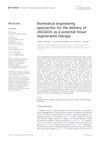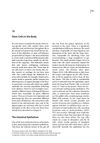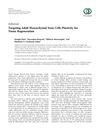Search
for
Did you mean Tissue Regeneration?
Products matching "regenerate tissues"
Tracking 1 products like 194 Regenez Regeneration Scalp Hair Loss Regrowth Supplement from by companies like ZeeMoreUncle. View product »Learn
5 / 8 resultslearn Thymosin Beta 4
learn Epidermal Growth Factor
learn Osteopontin
signaling protein that, when suppressed, may grow hair by reducing inflammation and stem cell loss
learn Beta Polypeptide
Research
5 / 1000+ results
research Biomedical Engineering Approaches for the Delivery of JAGGED1 as a Potential Tissue Regenerative Therapy
JAGGED1 could help regenerate tissues for bone loss and heart damage if delivered correctly.

research Stem Cells in the Body
Stem cells regenerate tissues and their behavior varies by environment, suggesting the hematopoietic system model may need revision.
research Extracellular Vesicles for Regenerative Medicine Applications
Extracellular vesicles can help repair and regenerate tissues with less risk of rejection.

research Targeting Adult Mesenchymal Stem Cells Plasticity for Tissue Regeneration
Adult mesenchymal stem cells can help regenerate tissues and are promising for healing bones, wounds, and hair follicles.

research Treg–Tissue Cell Interactions in Repair and Regeneration
Treg cells help repair and regenerate tissues by interacting with local cells.
Community Join
5 / 241 resultscommunity What's the deal with verteporfin?
The conversation discusses verteporfin as a potential hair loss treatment and questions why more precise methods aren't used to test its effectiveness in regrowing hair. Some users believe verteporfin is promising and should receive more attention, while others are skeptical about the testing methods.
community Peptides that Stop Hair Loss? | In-depth Literature Review Video
Peptides like TB500, KPV, GHK-CU, and BPC-157 are overhyped for hair growth with limited proven effectiveness in humans. Combining peptides with delivery methods like iontophoresis and sonophoresis shows promise, but many claims remain unproven.
community Calecim (PTT-6) Advanced Hair System with Topical Exosomes and Growth Factors for Hair Growth
Calecim (PTT-6) Advanced Hair System is a 6-week hair restoration product using stem cell-derived ingredients to stimulate hair growth. Users are skeptical, calling it overpriced and ineffective, suggesting alternatives like LLLT devices or PRP treatments.
community Why Is Only Tressless Talking About Verteporfin? Healing Wounds With Zero Scarring Has Gargantuan Implications For All of Medicine. So What Gives?
The potential of verteporfin to heal wounds without scarring; however, despite its promising preclinical trials and coverage from a major media outlet, there is still no official clinical trial result and the drug has only garnered attention from hair loss communities.
community Verteporfin and Microneedling
Clinical studies by Dr. Barghouthi and Dr. Bloxham indicate that Verteporfin, when used with FUE and FUT hair transplantation methods, shows promise in hair follicle regeneration and minimal scarring due to its ability to inhibit Yes-associated protein (YAP). Microneedling at depths of 3-3.5mm, combined with Verteporfin, could potentially reactivate dormant follicles, although the optimal dosage and application method are still under investigation. Concerns remain about the DHT sensitivity of regenerated follicles, highlighting the need for further research to optimize trauma levels and Verteporfin concentrations to achieve effective and scar-free hair regeneration.